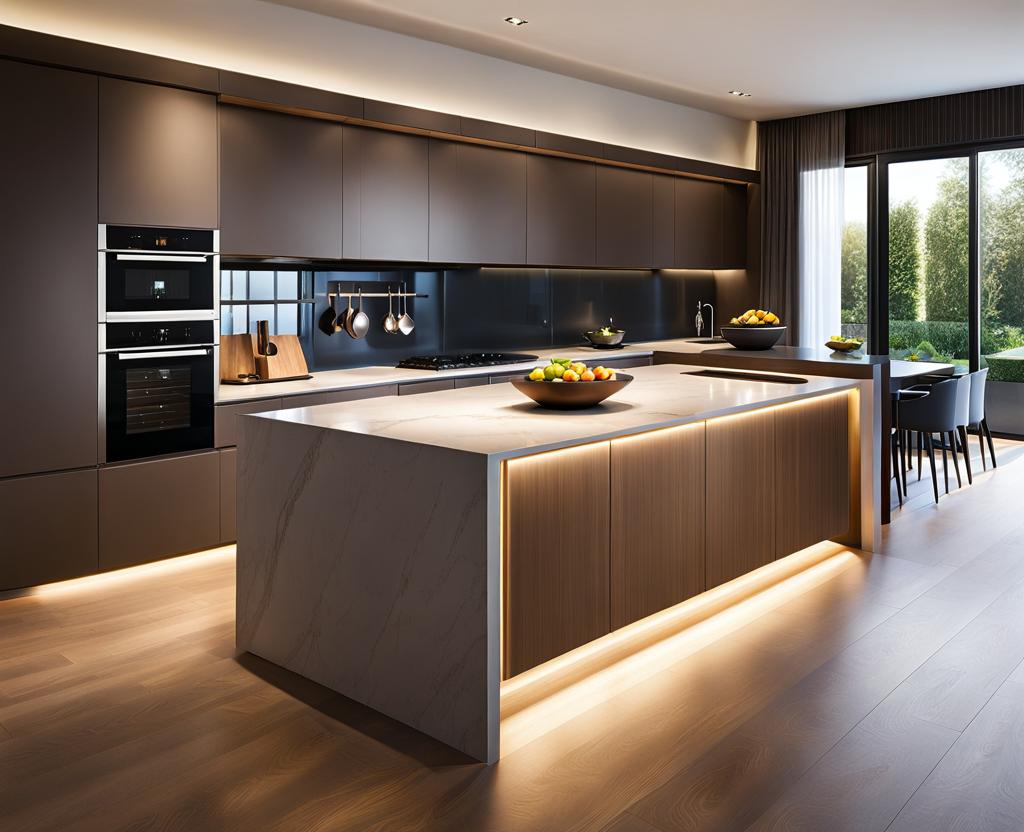When it comes to designing your dream kitchen, the dimension of the kitchen island plays a crucial role in creating a functional and aesthetically pleasing space. This central hub is where culinary magic happens, and getting the size right can make all the difference in your cooking experience and overall kitchen dynamics.
Assessing Your Kitchen Layout and Needs
Before diving into measurements, it’s essential to evaluate your kitchen’s layout and how you intend to use the island. Start by understanding the different work zones within your space: prep, cooking, cleaning, and storage. Visualize how you’ll move between these areas, ensuring a smooth flow without feeling cramped or restricted.
Next, determine the island’s primary function. Will it serve as a prep station, a dining area, or a combination of both? The number of people who’ll be using the kitchen simultaneously is another critical factor to consider. A larger island might be necessary for households with multiple cooks or frequent gatherings, while a smaller, more compact design might suffice for solo cooking enthusiasts or couples.

Considering traffic patterns is also crucial. If your kitchen serves as a high-traffic area, with multiple entry points or a pass-through layout, you’ll want to ensure that the island doesn’t obstruct the natural flow of movement. Alternatively, you could strategically position the island to create distinct zones, separating the cooking area from the main walkway.
Optimizing Island Dimensions for Functionality
Once you’ve established your needs, it’s time to explore the optimal dimensions for your kitchen layout. For U-shaped or L-shaped kitchens, a standard island size ranges from 3 to 4 feet wide and 6 to 8 feet long. However, these measurements can vary based on your specific requirements and the overall space available.
Clearance is key when it comes to walkways and appliance doors. Aim for at least 36 inches of space between the island and surrounding countertops or walls to ensure seamless movement. If you plan to incorporate seating at the island, factor in an additional 12 to 15 inches for overhang to accommodate chairs or stools comfortably.
When it comes to the island’s height, the standard countertop height is typically 36 inches, but you may want to consider a slightly lower or higher surface depending on your needs. For instance, if you plan to use the island for casual dining or as a workspace, a height of 42 inches might be more comfortable for standing tasks.
Storage Solutions Within the Island
Don’t overlook the opportunity to incorporate storage solutions within your kitchen island. Strategically placed cabinets, drawers, or open shelving can transform your island into a highly functional workstation while keeping your countertops clutter-free. Consider your storage needs and plan accordingly, whether it’s for pots and pans, cookbooks, or serving ware.
Opt for deep drawers or pullout shelves for easy access to frequently used items, and incorporate dedicated spaces for small appliances or built-in features like a microwave or wine cooler. If you’re an avid entertainer, you might even want to include a built-in ice bucket or a beverage refrigerator within the island for added convenience.
Ensuring Aesthetic Harmony
While functionality is paramount, the dimension of your kitchen island should also complement the overall aesthetic of your space. Striking the right balance between proportions and visual interest is key. A larger island can serve as a focal point, making a bold statement and anchoring the room’s design.
Pay attention to the island’s style and finishes, ensuring they harmonize with the rest of your cabinetry and decor elements. Consider varying the island’s dimensions to create visual interest or introduce contrasting materials for a more dynamic look. The goal is to create a cohesive and visually appealing design that reflects your personal style.
Additionally, consider the island’s placement within the overall kitchen layout. An asymmetrical or offset positioning can add visual interest and guide the flow of movement, while a centered island can create a sense of balance and symmetry.
Beyond aesthetics and functionality, there are practical considerations to keep in mind when determining the dimension of your kitchen island. If you or a family member has special needs or mobility requirements, ensure adequate clearance and accessibility around the island.
Don’t forget to factor in plumbing and electrical needs, especially if you plan to incorporate a sink, cooktop, or appliances into the island design. Proper ventilation is also crucial if you intend to include a cooktop or range, so plan for sufficient overhead clearance or consider installing a downdraft ventilation system.
In smaller kitchens, finding the perfect balance between an island and ample walking space can be challenging. Get creative with solutions like extending countertops, incorporating wheels for mobility, or opting for a compact, multi-functional island that can serve as a prep area, dining space, and storage solution all in one.
Another practical consideration is the island’s weight and support. Depending on the materials you choose and the features you incorporate, your island might be quite heavy. Ensure that your flooring can adequately support the weight, and consider reinforcing the base or incorporating additional support structures if necessary.
Ultimately, the dimension of your kitchen island should cater to your unique needs and lifestyle. By thoughtfully considering your kitchen’s layout, functionality, and aesthetic vision, you can create a space that seamlessly blends form and function, making your culinary adventures a true delight.

This is where you’ll find inspiration to create a stylish and beautiful dream home.